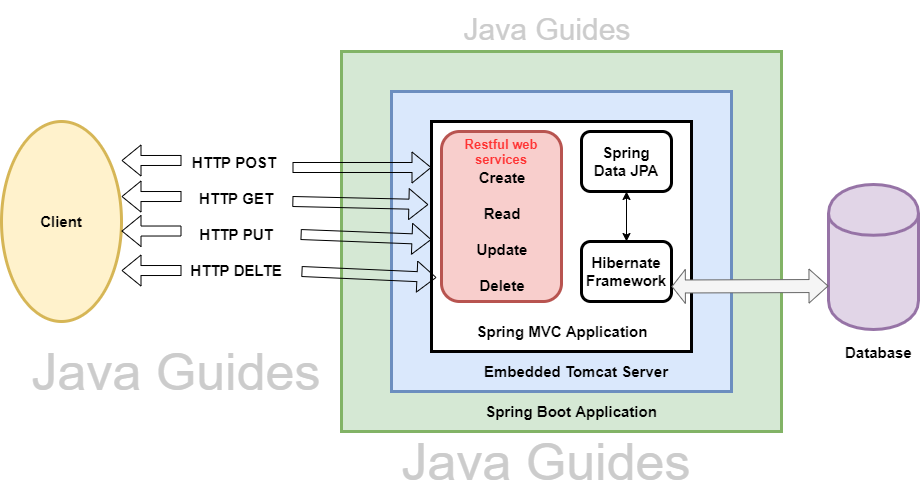In the vast Java ecosystem, unit testing is a non-negotiable pillar of building robust and maintainable applications. Frameworks like JUnit and Mockito have become indispensable tools for developers. Mockito, in particular, simplifies the creation of test doubles (mocks) to isolate the class under test. One of its most convenient features is the @InjectMocks annotation, designed to automatically inject mock dependencies into the object you’re testing. However, many developers, from beginners to seasoned veterans, have encountered the frustrating scenario where this “magic” fails, leading to unexpected NullPointerExceptions and hours of debugging. This is a hot topic in recent Mockito news and Java developer forums.
This article provides a comprehensive deep dive into Mockito’s dependency injection mechanism. We’ll explore precisely how @InjectMocks works, uncover the common reasons it fails, and provide practical, code-driven solutions and best practices. By understanding the rules Mockito follows, you can eliminate guesswork and write cleaner, more reliable tests for your applications, whether you’re working with Spring Boot news, Jakarta EE, or any other modern Java framework. We’ll touch upon concepts relevant to the entire Java ecosystem news, from core principles to advanced testing strategies.
Understanding Mockito’s Injection Algorithm
The core misunderstanding about @InjectMocks is that it’s a magical black box. In reality, it follows a strict, well-defined algorithm to inject dependencies. Mockito attempts to instantiate the class annotated with @InjectMocks and then inject any fields annotated with @Mock or @Spy. To do this, it follows a specific order of preference, which is crucial to understanding why it might fail.
The Three Strategies of Mock Injection
Mockito tries the following injection strategies in order. As soon as one succeeds, it stops.
- Constructor Injection (Highest Priority): Mockito looks for the “greediest” constructor in your class. This means it finds the constructor with the most parameters and tries to satisfy it using the available
@Mockobjects. If it can find a match for every parameter type in that constructor, it will use it to create the instance. This is the cleanest and most recommended approach as it promotes immutable objects with clearly defined dependencies. - Setter Injection (Second Priority): If constructor injection is not possible (e.g., there’s no suitable constructor or only a no-argument constructor), Mockito will instantiate the object using the no-arg constructor. Then, it will scan for setter methods that match the types of your
@Mockobjects. For a field namedmyServiceof typeMyService, it would look for a methodsetMyService(MyService service). - Field Injection (Lowest Priority): If neither of the above strategies works, Mockito falls back to property/field injection. It will directly inject the mock into the field, even if it’s
private. This is often seen as a code smell in production code but is a powerful fallback for testing legacy code that may not have been designed with testability in mind.
Before any of this can happen, you must tell Mockito to process these annotations. In modern JUnit 5 tests, this is done by annotating your test class with @ExtendWith(MockitoExtension.class).
import org.junit.jupiter.api.Test;
import org.junit.jupiter.api.extension.ExtendWith;
import org.mockito.InjectMocks;
import org.mockito.Mock;
import org.mockito.junit.jupiter.MockitoExtension;
import static org.mockito.Mockito.*;
import static org.junit.jupiter.api.Assertions.*;
// A simple dependency
interface NotificationService {
boolean sendNotification(String userId, String message);
}
// The class under test using constructor injection
class OrderService {
private final NotificationService notificationService;
public OrderService(NotificationService notificationService) {
this.notificationService = notificationService;
}
public boolean placeOrder(String userId, String orderId) {
// Business logic...
System.out.println("Placing order " + orderId + " for user " + userId);
// Notify the user
return notificationService.sendNotification(userId, "Your order " + orderId + " has been placed.");
}
}
// The JUnit 5 test class
@ExtendWith(MockitoExtension.class)
class OrderServiceTest {
@Mock
private NotificationService notificationServiceMock;
@InjectMocks
private OrderService orderService;
@Test
void whenPlaceOrder_thenNotificationShouldBeSent() {
// Arrange
when(notificationServiceMock.sendNotification(anyString(), anyString())).thenReturn(true);
// Act
boolean result = orderService.placeOrder("user123", "order456");
// Assert
assertTrue(result);
verify(notificationServiceMock).sendNotification("user123", "Your order order456 has been placed.");
}
}In this ideal scenario, @ExtendWith(MockitoExtension.class) initializes the Mockito context. It creates a mock of NotificationService. Then, when processing @InjectMocks, it sees that OrderService has one constructor, which requires a NotificationService. It finds the matching notificationServiceMock and successfully injects it. This is a great example of keeping up with modern JUnit news and best practices.
Common Pitfalls: When Injection Fails
The frustration begins when the ideal scenario doesn’t play out. A NullPointerException is the classic symptom that @InjectMocks failed, leaving a dependency as null. Let’s examine the most common culprits.
1. The Constructor Conundrum
This is the most frequent cause of failure. If Mockito chooses constructor injection but cannot satisfy all the constructor’s parameters, it will fail to instantiate your object. This happens when a constructor requires a parameter that is not a mock, such as a primitive type, a String, or another complex object you haven’t mocked.

Consider this modified OrderService:
// Class with a constructor that Mockito cannot satisfy
class OrderServiceWithConfig {
private final NotificationService notificationService;
private final String region; // Primitive/String parameter
public OrderServiceWithConfig(NotificationService notificationService, String region) {
this.notificationService = notificationService;
this.region = region;
}
// ... methods
}
// The test will fail to initialize
@ExtendWith(MockitoExtension.class)
class OrderServiceWithConfigTest {
@Mock
private NotificationService notificationServiceMock;
// This will fail! Mockito doesn't know what String to provide for 'region'.
@InjectMocks
private OrderServiceWithConfig orderService;
@Test
void thisTestWillNotRun() {
// The test setup will throw an exception before this method is even called.
// The error will be something like:
// org.mockito.exceptions.base.MockitoException:
// Cannot instantiate @InjectMocks field named 'orderService'!
// ...
// You haven't provided the instance at field declaration so I tried to construct it.
// However, I failed because: constructor threw an exception
}
}Mockito can create a mock for NotificationService, but it has no way of knowing what String value to provide for the region parameter. It won’t guess “US-WEST” or an empty string. This inability to create an instance leads to the test setup failing, often before any @Test method is executed.
2. The `final` Field Roadblock
If you declare a dependency as final but do not initialize it in a constructor, you create a problem. Mockito’s field injection strategy cannot assign a value to a final field after object construction. This is a fundamental Java rule. This scenario is common in legacy code that uses field injection but also tries to enforce immutability with final.
// Class with an uninitialized final field
class LegacyOrderService {
// This is problematic for field injection
private final NotificationService notificationService;
// A no-arg constructor prevents constructor injection
public LegacyOrderService() {
// The final field is not initialized here!
// This will result in a compile error, but for illustration:
// let's assume a framework was doing some magic.
// In a real scenario, this wouldn't compile without initialization.
// A more realistic scenario is a mix of setter and final.
}
public void setNotificationService(NotificationService notificationService) {
// You cannot assign to a final field here.
// this.notificationService = notificationService; // COMPILE ERROR
}
}The key takeaway is: if a field is final, it must be initialized via a constructor. Therefore, if you have final fields, you are effectively forcing Mockito to use constructor injection.
3. Forgetting to Initialize Mockito
This is a simple but surprisingly common mistake. If you forget to enable the Mockito framework for your test, the @Mock and @InjectMocks annotations are never processed. Your mocks will be null, and the object under test will also be null.
- For JUnit 5: You must add
@ExtendWith(MockitoExtension.class)to your test class. - For JUnit 4: You would use
@RunWith(MockitoJUnitRunner.class). - Manual Initialization: Alternatively, you can call
MockitoAnnotations.openMocks(this);in a@BeforeEach(JUnit 5) or@Before(JUnit 4) method.
Forgetting this step means Mockito’s engine never runs, and the annotations are just metadata with no effect.
Practical Solutions and Best Practices
Now that we’ve diagnosed the problems, let’s focus on the solutions. The best approach is not just to fix the test but to improve the design of the code under test, making it more testable and maintainable. This is a core tenet found in modern Java wisdom tips news.
Embrace Constructor Injection
The premier solution is to refactor your classes to exclusively use constructor injection for mandatory dependencies. This aligns with best practices from the Spring Boot news and Jakarta EE news communities.
- Clarity: It makes the class’s dependencies explicit. Anyone looking at the constructor knows exactly what is required to create a valid instance.
- Immutability: You can declare your dependency fields as
final, preventing them from being changed after construction, which leads to more stable and thread-safe code. - Testability: It makes Mockito’s job easy and predictable. The framework will always find and use the constructor, removing any ambiguity.
When Needed: Manual Instantiation

Sometimes, @InjectMocks is more trouble than it’s worth, especially with complex object creation. In these cases, falling back to manual instantiation in your setup method is a perfectly valid and often clearer alternative.
Let’s fix the OrderServiceWithConfig test from before by manually creating the instance.
import org.junit.jupiter.api.BeforeEach;
import org.junit.jupiter.api.Test;
import org.junit.jupiter.api.extension.ExtendWith;
import org.mockito.Mock;
import org.mockito.junit.jupiter.MockitoExtension;
import static org.mockito.Mockito.*;
import static org.junit.jupiter.api.Assertions.*;
// Assuming OrderServiceWithConfig and NotificationService from before
@ExtendWith(MockitoExtension.class)
class OrderServiceWithConfigManualTest {
@Mock
private NotificationService notificationServiceMock;
// No @InjectMocks here!
private OrderServiceWithConfig orderService;
@BeforeEach
void setUp() {
// Manually instantiate the class under test, providing all dependencies.
// We provide the mock for the service and a real value for the String.
orderService = new OrderServiceWithConfig(notificationServiceMock, "EU-CENTRAL-1");
}
@Test
void whenPlaceOrder_thenNotificationIsSent() {
// Arrange
when(notificationServiceMock.sendNotification(anyString(), anyString())).thenReturn(true);
// Act
orderService.placeOrder("user456", "order789"); // Assuming this method exists
// Assert
verify(notificationServiceMock).sendNotification(eq("user456"), anyString());
}
}This approach is more explicit. It clearly shows how the orderService is constructed. There is no “magic,” which makes the test easier to read and debug for other developers. This is often the preferred method when dealing with classes that have dependencies on non-mockable types like primitives or configuration values.
Advanced Considerations and Modern Java
As the Java landscape evolves with updates like Java 17 news and Java 21 news, our testing strategies can also evolve. For instance, Java’s `record` feature is a perfect fit for Data Transfer Objects (DTOs) and simple immutable classes. Since records have a canonical constructor by default, they work seamlessly with Mockito’s constructor injection strategy.
`@InjectMocks` vs. Spring’s `@Autowired`
In a Spring Boot application, it’s vital not to confuse Mockito’s injection with Spring’s.
@InjectMocksis a Mockito annotation for unit tests. It creates a real instance of a class and injects mocks into it.@Autowiredis a Spring annotation for runtime dependency injection. In tests, using annotations like@SpringBootTestwill load a Spring context, and@Autowiredwill inject real beans or beans defined in your test configuration.
For pure unit tests (which are faster and more focused), you should use @InjectMocks and @Mock. For integration tests that require a running Spring context, you would use @SpringBootTest and rely on @Autowired for the class under test and @MockBean to replace specific beans in the context with mocks.

Handling Complex Object Graphs
If your service has a dependency, which in turn has its own dependencies (e.g., OrderService -> NotificationService -> EmailGateway), @InjectMocks alone may not be sufficient. You might need to use @Spy or nested mocking setups. However, this often indicates a violation of the Law of Demeter and could be a sign that your class is doing too much. A better approach might be to refactor the class to have fewer direct dependencies.
Another related topic in Java performance news is the startup time of tests. Leaning on manual instantiation and pure Mockito tests without a Spring context can dramatically speed up your build pipeline, a critical factor in large projects managed with Maven news or Gradle news.
Conclusion: Master the Rules for Flawless Tests
The frustration of @InjectMocks failing is a rite of passage for many Java developers, but it’s a solvable problem. The key is to move beyond viewing it as magic and instead understand its simple, hierarchical rule set. By embracing constructor injection as a design principle, you not only make your production code more robust and readable but also make it trivially easy for Mockito to do its job.
To summarize the key takeaways:
- Prioritize Constructor Injection: Design your classes to take dependencies through the constructor. This is the most reliable strategy for
@InjectMocks. - Check Your Constructor: Ensure Mockito can satisfy all parameters of the chosen constructor. It cannot guess primitives, Strings, or other non-mockable objects.
- Initialize Mockito: Always remember to use
@ExtendWith(MockitoExtension.class)for JUnit 5 or an equivalent mechanism to trigger annotation processing. - Don’t Fear Manual Instantiation: When a class has complex setup logic, manually creating the instance in a
@BeforeEachmethod is often clearer and more robust than fighting with@InjectMocks.
By applying these principles, you can turn a common point of friction into a smooth and efficient part of your development workflow, leading to higher-quality tests and more confidence in your codebase. This knowledge is a valuable part of any developer’s toolkit in the ever-evolving world of the Java platform.

